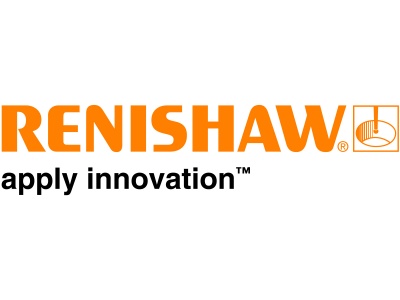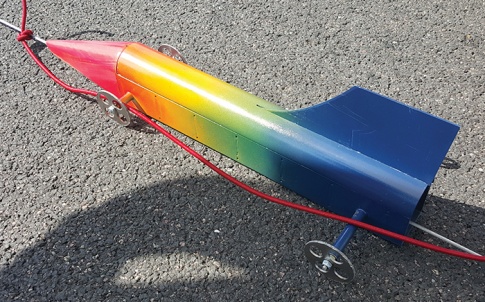Not content with setting a new land speed record a group of a school students in Mansfield are now gearing up for an assault on the sound barrier.
Collaborate To Innovate 2017
Category: Young innovator
Winner: Breaking the sound barrier with a model rocket car
Partners: The Joseph Whitaker School; Rolls-Royce; Swansea University; Easy Composites; GS Products; iMechE; Santa Pod Raceway; GaaTech
Category Sponsor: Renishaw Plc

Much has been made of the so-called ‘Bloodhound effect’: the way in which the UK effort to develop a 1,000mph car has been used to engage and inspire the next generation of engineers. And there can be few more striking examples of this phenomenon in action than the achievements of a group of pupils from The Joseph Whitaker secondary school in Mansfield which, after setting a world record speed for a rocket-powered model car of 533mph, is now gearing up for an assault on the sound barrier.

Established by technology teacher Phil Worsley, the school’s Young Engineers group started life in 2006 after a meeting with Richard Noble inspired Worsley to kick-start his own rocket-car project. Since then, successive generations of pupils, ranging from ages 11 to 17, have worked on a series of progressively faster rocket cars, graduating from cardboard to carbon fibre, progressing from tennis courts to runways, learning invaluable practical lessons on aerodynamics and thrust, and generally finding out what it means to work on a serious engineering team. Indeed, pupils wanting to take part have to apply as if they’re applying for a real job, and complete a three-month probation period before becoming a full-time member of the team.
The group’s record-breaking run, made in October 2014 at Rolls-Royce’s test runway in Hucknall, was set by Insanity: a 45cm-long carbon-fibre vehicle, running on titanium wheels and powered by tried-and-tested space launch propellant ammonium perchlorate. Reflecting on the team’s route to record-breaking success, Worsley explained that one of the first lessons learned by the pupils during the development of the car was the importance of the chassis design. And, in order to understand the force of the rocket motor on different parts of the car, the team built a series of models in a variety of materials and tested them by applying loads at different points.
In addition, the group has used its own purpose-built wind and water tunnels to analyse the aerodynamic performance of these models, and has also used software – specifically Autodesk Inventor and its Flow design add-on – to develop and assess a series of virtual models. Another key bit of bespoke equipment developed by the group is the timing system used to record the rocket car runs. This was developed in collaboration with the National Physical Laboratory (NPL).
A number of other key industrials collaborators have helped the team along the way, including Rolls-Royce (which as well as providing access to its runway has also met with the pupils every month); Stoke-on-Trent firm Easy Composites, which has helped the group understand how to make and machine carbon-fibre structures; and SWR group, which has manufactured the guide cable: the high-tension steel cable that the cars run along in order to prevent them from spinning off the track.
In parallel with this engineering effort, and in an unusual development for a school project, Worsley’s group has even become a STEM ambassador in its own right. It has run a number of public rocket-car events, a community day for primary schools, and has designed a 2.5 Newton rocket-car launch and timing system that can be bought by other organisations to run their own rocket-car programmes. “Because we’ve had all this fun, we wanted to share it in some way,” said Worsley.
The group now has its sights set on an effort to use a larger model rocket car to break the sound barrier (768mph) in either June or July 2018 at the Santa Pod Raceway in Bedfordshire. In pursuit of this goal the team has already carried out a series of unadjudicated tests at Santa Pod, hitting an unofficial speed of 730mph at the last main run in September 2016. Indeed, during this most recent test, an audible crack suggested that parts of the vehicle actually broke the sound barrier. “When our cars reach about 700mph, the air flow over the nose, wheels, fuselage and tail can be accelerated beyond 768mph,” explained Worsley. “We think the angle of the nose is accelerating the air upwards, so reaching speeds that exceed the sound barrier and causing a mini-boom as it collapses behind the car. Or… we had the entire car going supersonic and didn’t have the timing system in the correct place – measuring a lower value than the car actually did!”
Worsley’s pupils describe him as an “amazing teacher” and there’s no doubt that his infectious enthusiasm has been a key factor in propelling the team. For him though the students are the real stars: “It has been an honour to work with my students, watching them grow, and become supreme ambassadors for STEM. Watching them represent our school on regional and national platforms fills me with pride… They are a force to be reckoned with!”
Shortlisted – Young innovator
Project name: PollutechPartners: The Ursuline Academy, Ilford; IBM; NESTA
Poor air quality is a growing concern across the UK, and there’s now strong evidence that pollutants such as nitrogen dioxide (NO2) and particulates are responsible for tens of thousands of premature deaths in the UK every year. The situation is at its worst in London, which regularly exceeds international limits, and where poor air quality is thought to be responsible for 6,000 to 7,000 premature deaths per year.
In response to this, a group of students at Ilford’s Ursuline Academy, an all-girl comprehensive in east London, joined forces with IBM to develop a detailed design for a wearable device that measures pollution levels and works alongside an app to help pedestrians calculate the least-polluted route to their destination.
The project was initiated through the Longitude Explorer Prize, a competition organised by the funding body Nesta that challenges 11 to 16-year-olds to devise practical health and wellbeing technologies that use the Internet of Things
Throughout the project, collaboration was key and the group used video conferencing technology to maintain regular contact with a group of IBM experts that helped it refine its concept. The project also involved a ‘design-thinking’ workshop, led by two IBM experts, where pupils gained insight into how to manage the design process. This encouraged the students to think in detail about different users and different scenarios in which their device might be used.
While the device is still at concept stage, feedback from IBM on its commercial potential has been positive. What’s more, beyond the core technology, the relationship with IBM has helped advance the students’ understanding of the Internet of Things and of coding, and has established links with a network of engineers and resources.
Project name: Oxidation Characteristics of Titanium 6/4 AlloyPartners: James Hamilton Academy; Edinburgh Napier University; Strathclyde University (AFRC); Rolls-Royce
STEM outreach projects are usually considered a success if they manage to inspire the students involved. A project involving Rolls-Royce, Edinburgh Napier University, the Advanced Forming Research Centre and Janice To, a fifth-year pupil at James Hamilton Academy in Kilmarnock, Scotland, went a step further by significantly enhancing the understanding of an alloy used widely in the aerospace sector.
The manufacturing process for Titanium 6/4 components involves several thermo-mechanical processing operations that are performed at temperatures in excess of 900˚C. As a result of the thermo-mechanical processing operations, an oxide layer is formed on the surface of the alloy. The research aspect of this project focuses on obtaining a better understanding of the oxidation characteristics of Titanium 6/4 alloy.
The primary reason for undertaking this research project was to reaffirm the existing manufacturing controls associated with the removal of oxide layers and to supplement the training of current and future laboratory staff and operators at Rolls-Royce.
To’s technical report furthering the knowledge and understanding of the oxidation characteristics of the alloy formed the starting point for further research at both Edinburgh Napier University and Strathclyde University’s Advanced Forming Research Centre.
To was awarded the Gold Crest Award by the British Science Association in recognition of her research activities at Rolls-Royce. She was also a finalist at the Big Bang UK Young Scientists and Engineers Fair during March 2017.
Collaborate To Innovate (C2I) is an annual campaign run by The Engineer, including an awards competition and conference, established to uncover and celebrate innovative examples of engineering collaboration
The headline sponsors for C2I 2017 were Frazer-Nash Consultancy and Yamazaki Mazak
For information on sponsoring or supporting C2I2018 contact The Engineer’s commercial director Sonal Dalgliesh sonal.dalgliesh@centaurmedia.com




Glasgow trial explores AR cues for autonomous road safety
They've ploughed into a few vulnerable road users in the past. Making that less likely will make it spectacularly easy to stop the traffic for...